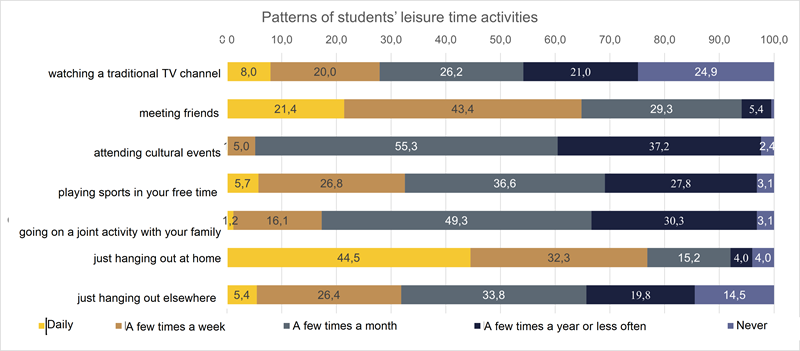Almost one in two university students have already used drugs and one-third of them drink alcohol each week
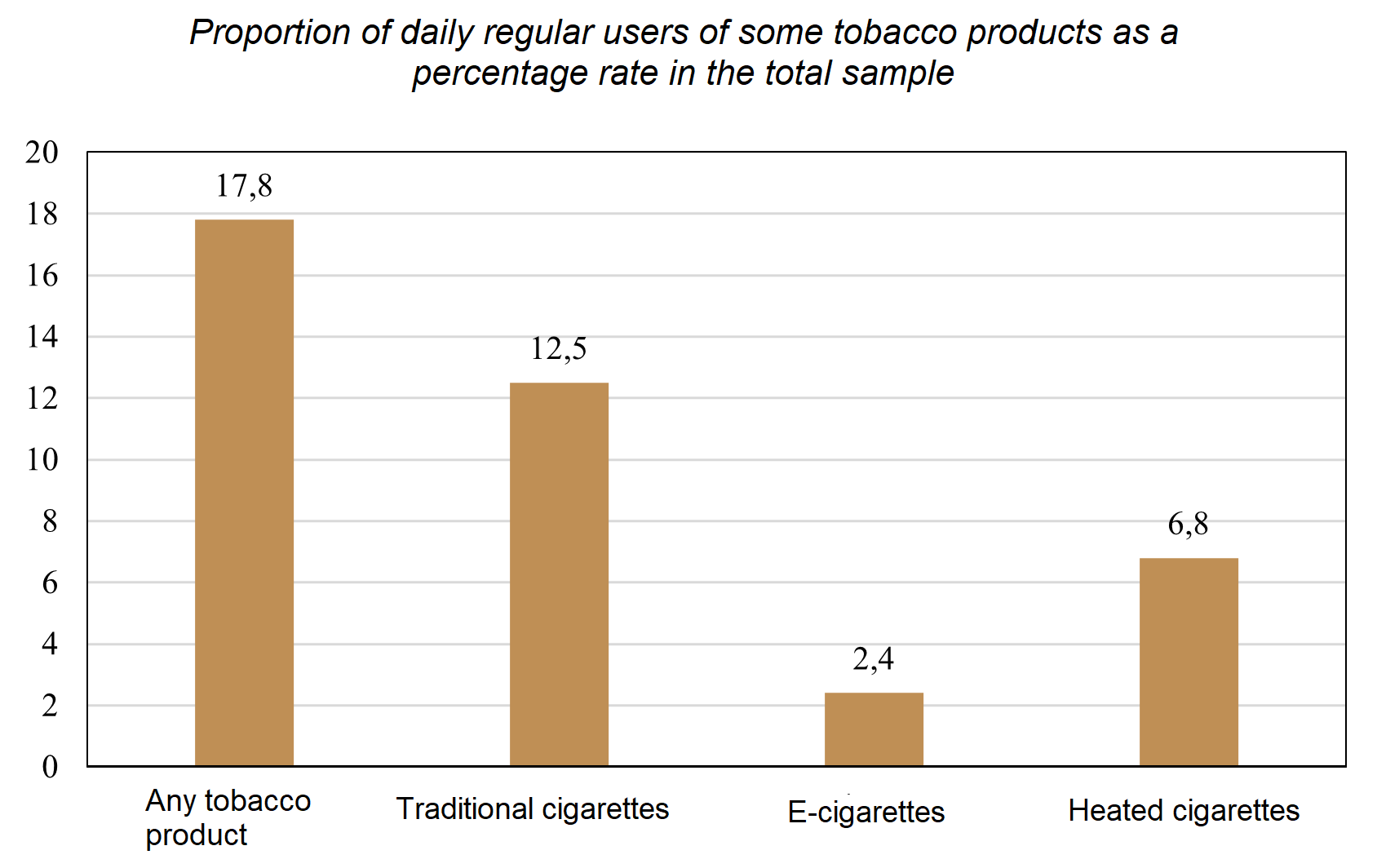
A research team, led by Zsuzsanna Elekes, Professor at Corvinus University, mapped risk behaviours of young people through a national representative survey. The HUN-REN Social Epidemiology Research Group surveyed 1,385 university students in 2022, with an equal split between girls and boys, and between residents of the capital city and the rest of the country.
The results show that smoking is less prevalent among university students than the average population, with 43.6% of respondents having consumed some tobacco product in the week before the survey and 17.9% smoking on a daily basis. The average proportion of Hungarians who smoke daily was 24.5 per cent in 2019, according to KSH data. Interestingly, traditional cigarettes are still the most popular among students, with e-cigarettes and heated tobacco products being less popular.
A university student drinks twice as much alcohol as an average young person, on an average occasion
As for alcohol, one third of students consume it on a weekly basis; weekly drinking is twice as common among boys as among girls; and university students’ consumption is more than twice the amount drunk by secondary school students. 94% of respondents had consumed alcohol during the prior one-year period, and 27% of them had consumed large amounts of alcohol on a monthly basis. In addition, it turned out, that when university students drink alcohol, they consume much more of it than adults or secondary school students: more than twice as much as secondary school students when calculated in terms of pure alcohol. Beer and wine are the most common drinks among university students, hard liquors do not dominate and, unlike secondary school students, they tend to drink in pubs and bars rather than at home. When asked if they had ever experienced any signs of a hangover, 41% of respondents reported some problem, compared to 10.3% in a previous nationwide sample of adults. Students at universities of Budapest and natural sciences drink higher amounts and more often than students at institutions outside Budapest and of social sciences.
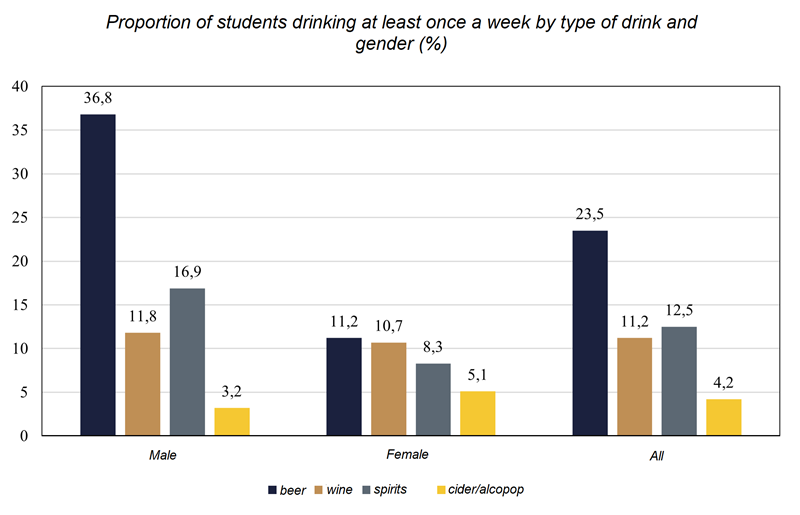
“One of our important goals is to explore the alcohol situation in Hungary, as often uncertain data is available on it. Young people are the most at risk in this regard, but relevant research is rarely conducted among university students, unfortunately, and this is why the current results are so valuable,” Zsuzsanna Elekes, Professor at Corvinus University, Leader of the HUN-REN Social Epidemiology Research Group, emphasized.
Almost one in two students have tried some kind of drug, the most common being cannabis (36.3%), sleeping pills or tranquillisers taken without a prescription (14.3%), and Ectasy (8.2%). More than a quarter of students are repeat users; and boys and students studying in Budapest are more affected. Cannabis is more than 3.5 times more prevalent among university students compared to 18-34 year olds, and more than twice as prevalent compared to the age group of students in forms 9 -10. Other relatively common drugs include amphetamines (6.6%), sleeping pills and sedatives taken on prescription (6.1%), alcohol drunk on medication (5%), magic mushrooms (4.8%), cocaine (4.4%), painkillers used to improve mood (4.3%), synthetic cannabinoids (4.1%) and LSD (3.4%) – with heroin at the bottom of the list at 0.2%. Working while studying is a risk factor: a higher proportion of university students who are currently working have tried drugs than those who are not.
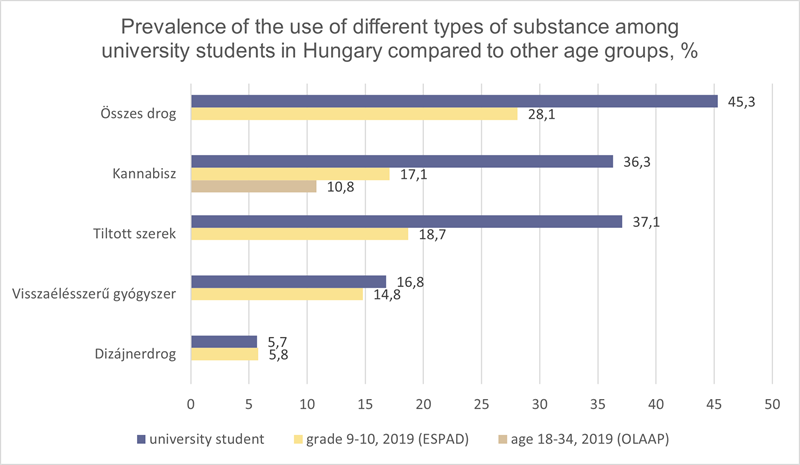
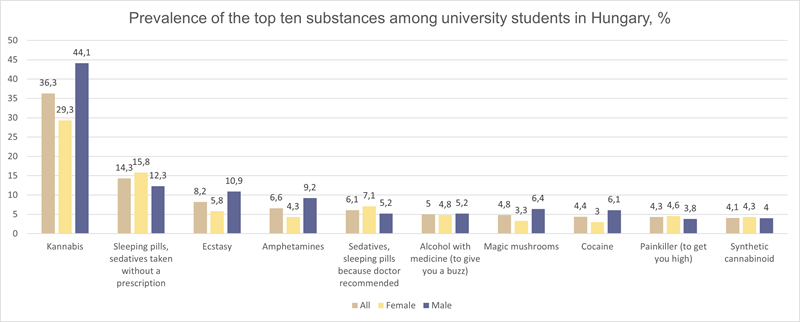
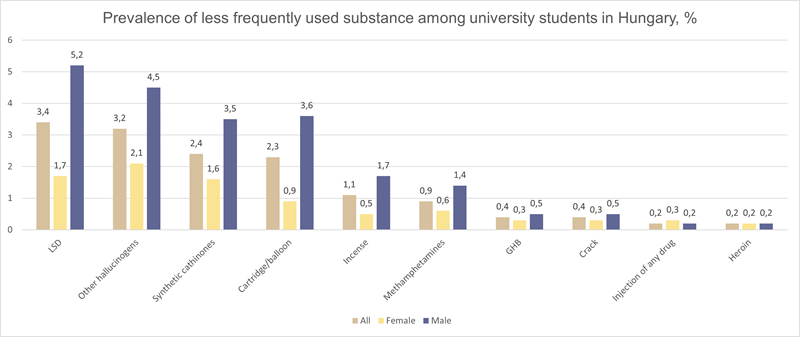
University students spend 6.6 hours a day online
Another Corvinus staff in the Research Group, Kitti Kutrovátz, researched what students spend their leisure time on. According to the results, the most popular leisure time activity among students is meeting friends, followed by “just hanging out at home or elsewhere”, and then traditional TV watching; doing sports is characteristic to a third of them. The question is also influenced by gender, with girls more likely to spend their time without any special goal, and boys more likely to do sports. People in Budapest also spend time doing sports more frequently. Longer and more frequent online presence is more characteristic to residents of settlements other than the capital city, to the inactive in the labour market, and to those without a partner relationship.
“Protective factors include relationship status and work: the risk of problematic internet- and social networking site use is lower among those in stable relationships. Those who work while pursuing their studies participate in more cultural events,” Kitti Kutrovátz, Corvinus University staff member, said.
In the online space, students mainly use social media, listen to music, watch videos and films. The average time spent in front of a screen is 6.6 hours per day among those surveyed. Boys are more likely to play online games, while girls are more likely to chat and use social networking sites. Problematic internet use is characteristic to about one in four university students, but only 6% of them use social media in a worrying way.
